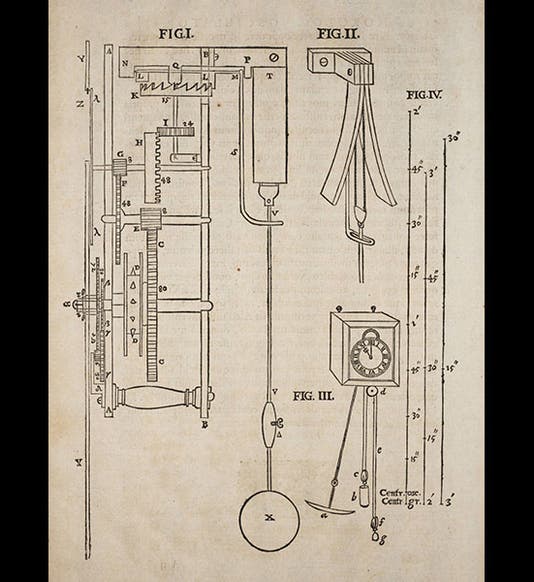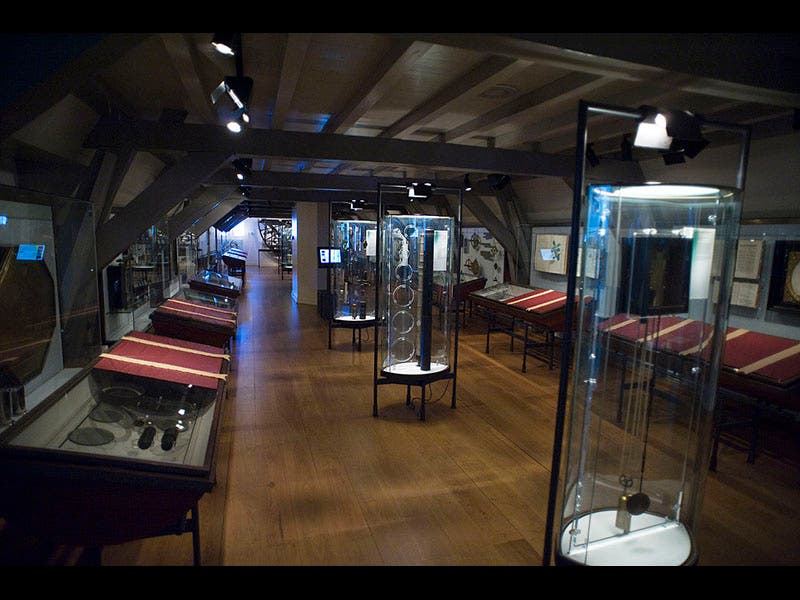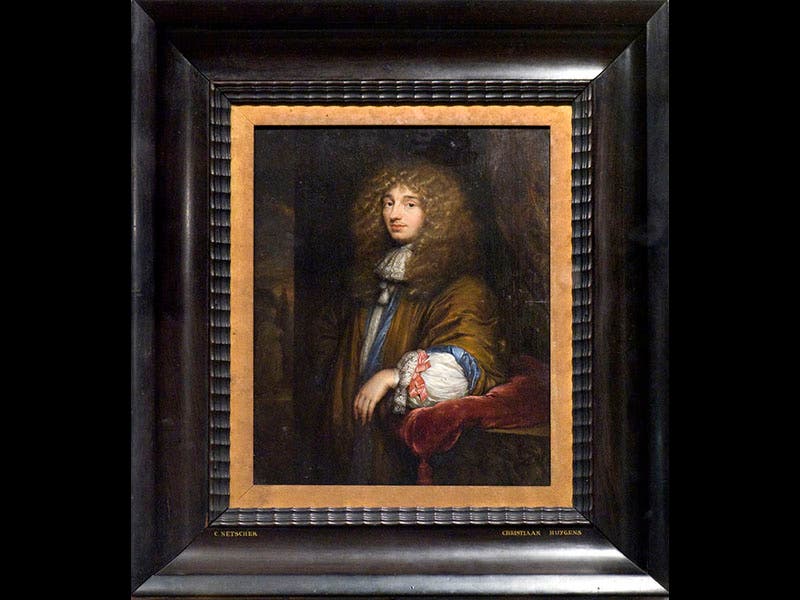Scientist of the Day - Christiaan Huygens
Christian Huygens, a Dutch inventor, astronomer, and mathematical physicist, was born Apr. 14, 1629. Several years ago, we featured Huygens in this space, marking the day of his death, and at that time we discussed his discovery of the rings of Saturn. Today we celebrate his invention of the pendulum clock. Galileo had earlier discovered that a pendulum is "isochronous," so that every swing takes the same amount of time, and would thus make a perfect regulator for a clock, but he did not figure out how to couple a pendulum to a clockwork mechanism. Huygens did. He dated his invention to Dec. 25, 1656, meaning he had a workable clock on that date, and he applied for a patent on June 14, 1657, receiving that patent two days later.
Huygens published a treatise, Horologium, in 1658, with a woodcut illustrating the mechanism of a second clock, but that treatise is practically non-existent today. Fifteen years later, he published a more substantial book, Horologium oscillatorium (1673), in which he provided a slightly different woodcut that pictures his very first clock of 1656/57. We have that work in our Collections, and we display the woodcut above (first image). The pendulum is shown twice, in an oblique view at the right, and then from the side, attached to the clock mechanism. The swing of the pendulum rocks a small L-shaped wire back and forth, which in turn rotates a pair of tabs on a rod at the top of the clock (the verge), which allows the crown-shaped wheel to advance in steps. The L-shaped wire also "powers" the pendulum, providing it with a small boost on every swing, driven by a slowly falling weight.
Notice the curved "cheeks" at the top of the pendulum. This was the final invention by Huygens that made the pendulum clock really workable, and presumably the modification he first put in place on Dec. 25, 1656. Galileo thought a pendulum was isochronous no matter how big the swing, but Huygens knew that if the arc of a pendulum were any greater than one or two degrees, the larger swing would take a tiny bit longer than the shorter one. Huygens discovered that if he put curved strips of metal at the top, the pendulum would ride up on these cheeks if the swing were wide, effectively shortening the pendulum and slightly reducing the time of its swing. With the cheeks (which he deduced should have the curve of a cycloid), the pendulum was truly isochronous, beating the same time no matter how wide its swing.
Huygens’ pendulum clock revolutionized the practice of timekeeping in western Europe. When the spring watch was invented shortly thereafter, the stage was set for seeking the clockmaker’s Holy Grail: a solution to the longitude problem.
The earliest surviving Huygens pendulum clock (1657) may be seen in the Boerhaave Museum in Leiden (second image); the clock is in the case on the right, seen here from behind, but you can’t miss the pendulum. At one point the clock was also posed with the illustration in Huygens’ 1673 treatise (third image). The Museum also has an oil portrait of Huygens (fourth image), by Caspar Netscher, dating to 1671.
Dr. William B. Ashworth, Jr., Consultant for the History of Science, Linda Hall Library and Associate Professor, Department of History, University of Missouri-Kansas City. Comments or corrections are welcome; please direct to ashworthw@umkc.edu.










